Download
Purchase
Quick Links
Excellent ROI/Value For Money
The cost of a 1-developer license is equivalent to just 4 developer hours even at offshore outsourcing rates. Is it possible for your company to tackle the complexities of shell extension programming, COM, OLE and a host of other issues; and develop such well documented, thoroughly tested and feature-packed components in 4 hours? See the value for money yourself and increase ROI for your company.
Our Customers
See how EZShellExtensions is used in a popular software application at
TyphoonTools.
Read More..
Supported Tools
.Net Edition:
100% Pure C#; No Additional Dependencies
The .Net version supports:
Visual Studio 2013
Visual Studio 2012
Visual Studio 2010
Visual Studio 2008
Visual Studio 2005
Visual Studio 2003
Visual Studio 2002
Also supports the Express editions of the above IDEs.
WinForms and WPF Applications developed using:
C#, VB.Net, Managed C++, J#
and many others .Net languages.
MFC Edition:
Pure C++; No Additional Dependencies
Supports MFC/ATL/Plain C++ development in:
Visual Studio 2012
Visual Studio 2010
Visual Studio 2008
Visual Studio 2005
Visual Studio 2003
Visual Studio 2002
Also supports the Express editions of the above IDEs.
Supported OS
Supports 32-bit (x86) and 64-bit (x64) versions of:Windows 8
Windows 7
Windows XP
Windows Vista
Windows 2003
Windows 2000
Windows Me
Windows 98
Windows NT
Other Products
Develop namespace extensions in .Net fast and painlessly!Develop namespace extensions using MFC, ATL or plain C++ fast and painlessly!
EZShellExtensions Screenshots & Complete List of Supported Shell Extensions
TaskBar Bands, IE Toolbands and IE Horizontal and Vertical Explorer Bars
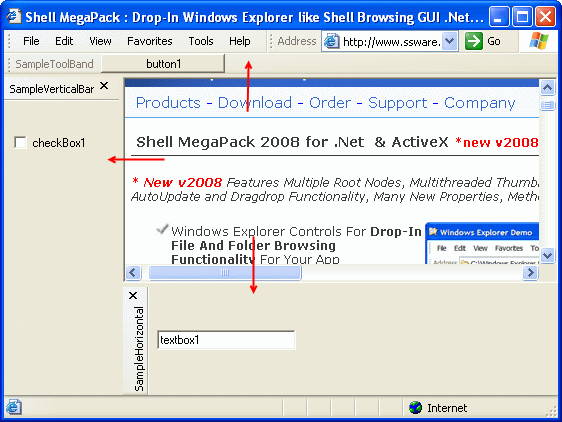
Context Menu Extensions
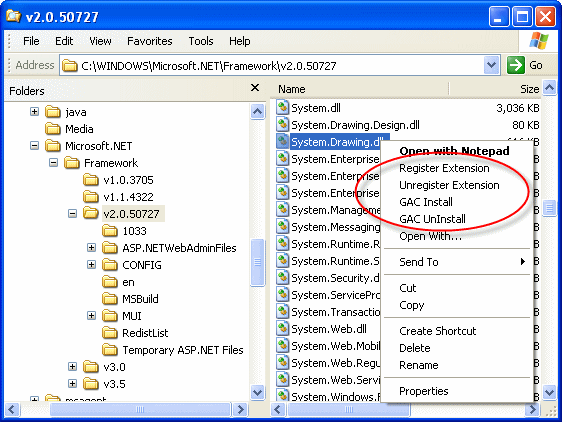
When a user right-clicks a file or folder, the Shell displays its context
menu. For file system objects there are a number of standard items, such
as Cut and Copy ,
that are on the menu by default. A context menu extension is an extension
that adds commands to an existing context menu. Context menu extensions
are associated with a particular file type and are called any time a context
menu is displayed for a member of the type. By implementing and registering
such a extension, you can dynamically add items to an object's context
menu, customized for the particular object.
Owner Drawn Context Menu Extensions

Icon Extensions
![]()
Overlay Icon Extensions
![]()
Property Sheet Extensions
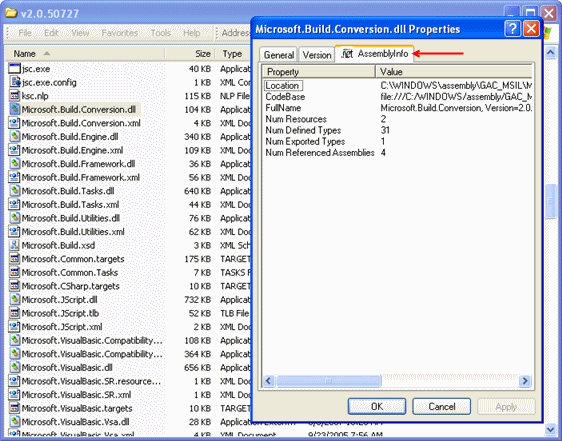
When a user right-clicks a Shell object, the shortcut menu that is displayed normally includes a Properties item. Selecting that item launches a property sheet that allows the user to view, and in some cases modify, the object's properties. You can customize this property sheet by implementing and registering a property sheet extension .
Column Extensions
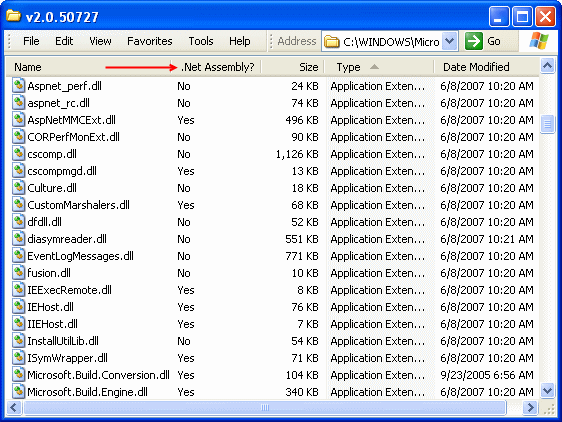
The Details view in the Microsoft Windows Windows Explorer normally displays several standard columns. Each column lists information, such as the file size or type, for each file in the current folder. By implementing and registering a column extension, you can make custom columns available for display.
Infotip Extensions
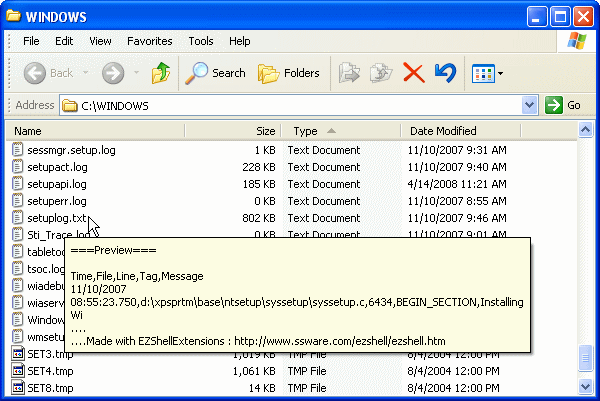
Whenever the mouse is moved over a file or folder in Windows Explorer, the shell displays a short infotip. This extension can be used to provide the data that is displayed by the shell when the mouse is moved over the appropriate file.
Thumbnail Extensions
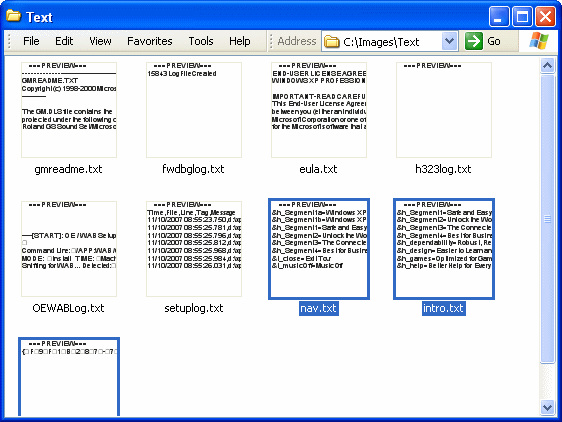
When Windows Explorer is displaying files and folders in Thumbnail View, a graphical snapshot/preview/summary is displayed as appropriate for each file or folder. By implementing a thumbnail extension, you can specify the graphic that is displayed for the file class that the extension targets.
Drop Extensions
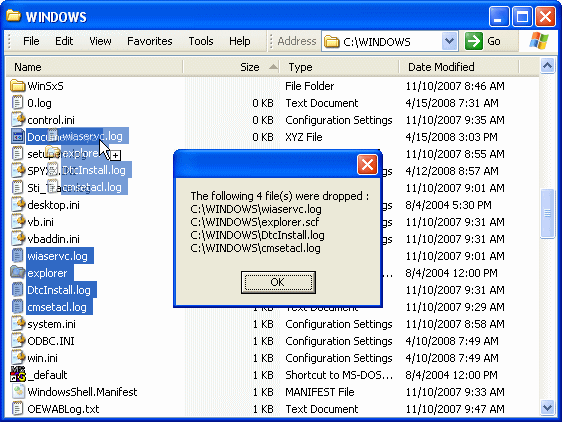
By default, files are not drop targets. You can make the members of a particular file class ( eg : *.bmp, *.cpp ) into drop targets using a drop extension. This extension is invoked whenever files or folders or other data are dragged or dropped over the members of the file class.
Directory Background Context Menu Extensions
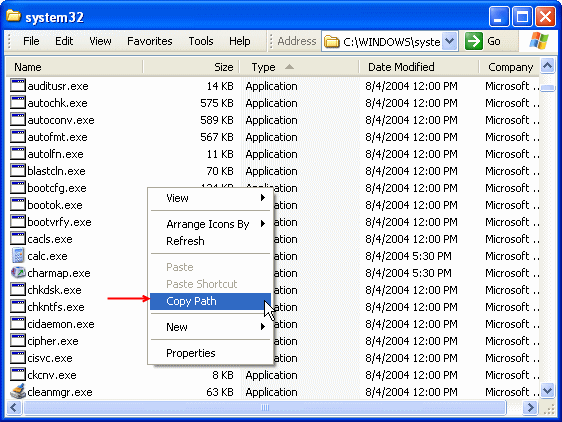
The DirBackgroundContextMenuExtension allows you to add menu items to the context menu that is displayed when the empty space in the directory is right-clicked.
SendTo Extensions

Disk Cleanup Extensions
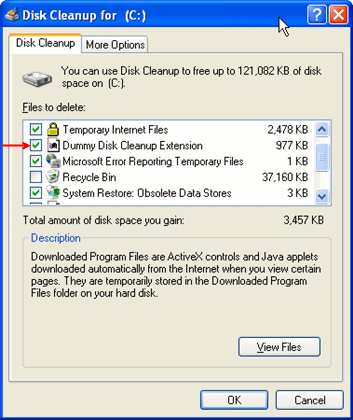
The disk cleanup manager is part of the operating system. The selection and cleanup of unneeded files is done by the individual disk cleanup extensions on the system. The user has the option of enabling or disabling individual extensions by selecting or clearing their check box in the disk cleanup manager's user interface (UI).
Although Windows comes with a number of disk cleanup extensions, they aren't designed to handle files produced by other applications. Instead, the disk cleanup manager is designed to be flexible and extensible by enabling any developer to implement their own disk cleanup extension. Any developer can extend the available disk cleanup services by implementing and registering a disk cleanup extension.
CopyHook Extensions
Normally, users and applications can copy, move, delete, or rename folders with few restrictions. By implementing a copy hook extension, you can control whether or not these operations take place. For instance, implementing such an extension allows you to prevent critical folders from being renamed or deleted.
The Shell calls all registered extensions every time an application or user attempts to copy, move, delete, or rename a folder or printer object. The extension does not perform the operation itself. It only approves or vetoes it. If all extensions approve, the Shell does the operation. If any extension vetoes the operation, it is canceled and the remaining extensions are not called. Copy hook extensions are not informed of the success or failure of the operation, so they cannot be used to monitor file operations.
DragDrop Extension
When a user right-clicks a Shell object to drag an object, a context
menu is displayed when the user attempts to drop the object. A dragdrop
extension is a contextmenu extension that can add items to this context
menu.
Download- .Net - | MFC
Buy- .Net - | MFC
Have a question? Email us.
Quick
Links
Crypto Obfuscator For .Net: -- More
Info -- Download -- Buy
CryptoLicensing: -- .Net
Edition --- MFC
Edition --- ActiveX
Edition
Hyper Build: -- More
Info -- Download -- Buy
Crypto Logger For .Net: -- More
Info -- Download -- Buy
EZNamespaceExtensions: -- .Net
Edition -- MFC Edition
EZShellExtensions: -- .Net
Edition -- MFC Edition
VS Explorer for Visual Studio: -- Info
-- Download
Support: -- Technical
Support -- Articles
-- Case Studies
Company: -- About
-- Contact
Copyright © 2007-2020 LogicNP Software.

